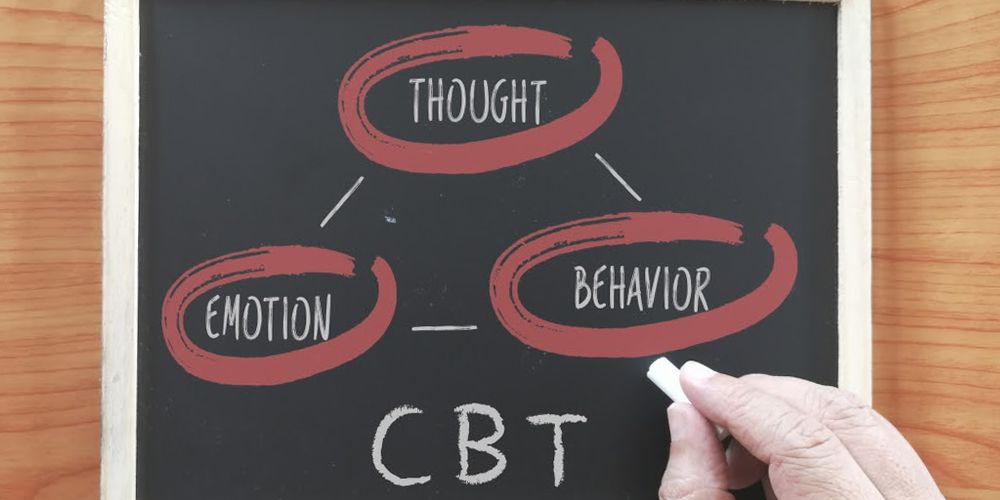Developed by Dr. Aaron Beck in the 1960s, CBT (short for cognitive behavioral therapy) is a form of counseling treatment that has been used to treat a variety of psychological disorders including depression, anxiety, sleep problems, substance use disorders, and eating disorders.
Today, CBT is one of the most well-known models of therapeutic treatment.
Cognitive Distortions and Goals of CBT
CBT is based on the principle that thoughts, feelings, and behaviors are intricately connected. This theory postulates that psychological distress tends to result from cognitive distortions. Cognitive distortions refer to faulty or rigid thought patterns. Some common examples of cognitive distortions prevalent in anxiety disorders include:
- Polarized thinking: In polarized thinking, people believe things are all-or-nothing. You are either perfect, or you are a failure. You either need to finish a task completely, or you don’t want to start at all. This type of thinking leaves no room for a “middle ground,” which leads people to thinking in ineffective extremes.
- Overgeneralization: In overgeneralization, people jump to quick, general conclusions based on a single shred of evidence. For example, if a young man experiences rejection from a girl one time, he may assume this will happen every time.
- Catastrophizing: Common in anxiety disorders, catastrophizing refers to the expectation that something bad will happen.
- Emotional reasoning: Emotional reasoning refers to the idea that a feeling indicates the truth. If a person believes they are ugly or lame, they think these feelings reveal undeniable facts.
- Personalization: Personalization refers to believing that the actions or beliefs of others are personal, even if that’s not the intention. People who struggle with personalization often compare themselves to others constantly. They may also assume guilt or responsibility for events beyond their control.
These cognitive distortions can lead to maladaptive coping responses. Maladaptive coping responses vary, but they might include social withdrawal or isolation, compulsive issues, or aggression. These thoughts and behaviors contribute to the individual feeling persistent, painful feelings like shame, guilt, fear, sadness, and anger. To combat these feelings, people often continue to engage in unhealthy coping skills, which perpetuates a negative cycle.

Thus, the goals for CBT include:
- Adapting more realistic thinking
- Strengthening mindfulness and acceptance for the present moment
- Improving interpersonal relationships
- Increasing self-care as a means of promoting self-esteem
CBT Treatment For Anxiety
CBT for anxiety is usually time-limited, structured, and collaborative. Therapists work with clients to identify their current cognitive distortions and ineffective coping strategies. They may encourage new ways of reframing such thinking, and they may also encourage trying new coping responses.
CBT may include homework. Clients are encouraged to practice new skills outside of sessions, and they are also encouraged to take reasonable risks. For example, a client with social anxiety may create a fear hierarchy where she commits to answering the phone instead of letting it go straight to voicemail. A client with panic disorder might agree to practice five minutes of mindfulness meditation each morning.



